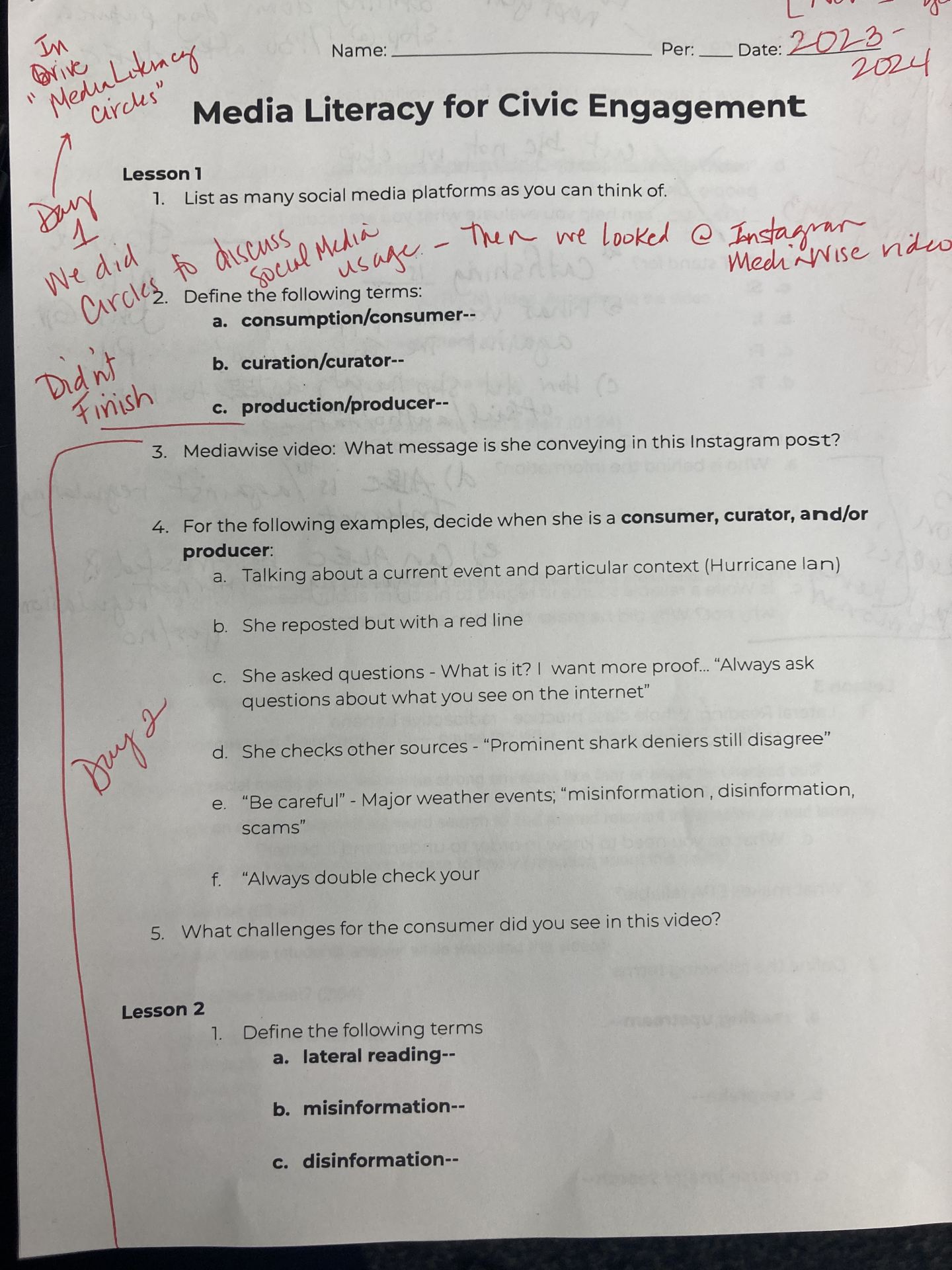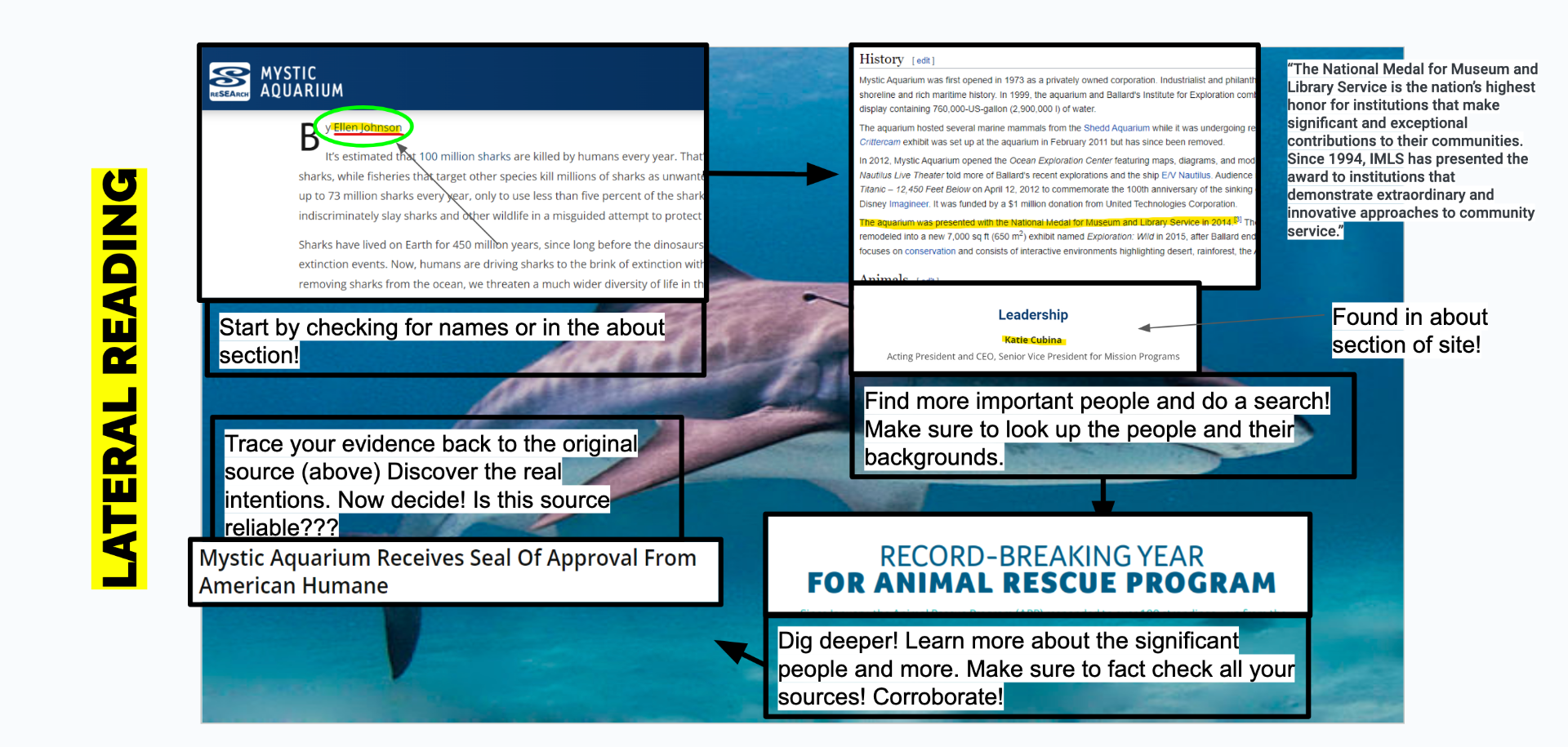By Nicole Gilbertson
Opportunities for students to engage in media literacy to critically analyze and engage in the creation of media content is an essential skill for informed and responsible civic engagement that students can learn in each of their courses. A recent report by the National Academy of Education, Educating for Civic Reasoning and Discourse, recommends, “Learning to engage in civic reasoning and discourse should explicitly include strategies to help students gather, analyze, and thoughtfully circulate information in digital and other media, including identifying and combating misinformation (Lee et, al. 2021).” Indeed, California has passed legislation, Assembly Bill 873, to incorporate media literacy, defined as “the ability to access, analyze, evaluate, and use media and information” into California’s Frameworks initiating with English in 2024, and math, science, and history-social science when they are next revised.
Though California’s revised Mathematics Framework highlights the need for students to understand and use data, “to identify misleading uses of data and use data to make decisions in their roles as global citizens,” these opportunities to engage in civic learning have often been inequitably distributed with white, middle-class students having increased access to classrooms and after-school civic education (Kahne & Middaugh, 2008). For democratic practices to flourish, all youth must have the opportunity to learn the skills and dispositions necessary to engage in our public sphere, and to support this goal, the Media Literacy Collaborative, a collaboration between The History & Civics Project at UC Santa Cruz and UCI Irvine School of Education, have created a curriculum to develop students’ media literacy for civic engagement.


We organize our free, online curriculum based on our vision for students’ engagement with media literacy: all students have the knowledge, skills, and dispositions to critically engage in civic reasoning and discourse as media consumers, curators and producers. The curriculum consists of four modules that are created to progressively build secondary students’ media literacy and civic reasoning skills so they can make informed and reasonable judgments about the media they consume, curate, and produce as digital citizens. The modules incorporate resources from media literacy organizations such as Pew Research, Newseum, PBS, researchers such as Mike Caufield and Sarah McGrew, and strategies and lessons from teachers in our Teacher Research Group, including Simon Fellowes and Monica Galvan.
Each of the four modules can also be used as stand-alone lessons and activities, and are flexible for teachers to integrate into their classroom context. In Module 1, students begin with identifying challenges in the current media landscape, and then investigate their own media use and the questions: What is news? Why does news matter? Students then learn and apply specific, responsive strategies for consuming, interpreting, and making judgements about various types of media in Module 2. We focus on students as consumers of media, strategies include pausing, lateral reading, and identifying expertise. As students adopt and apply specific skills and strategies to better evaluate and understand media, Module 3 centers students as contributors to civic discourse through the ways they curate media. Students will critically consider how their choices about which media they consume and share impacts themselves and their communities. Finally, in Module 4, students draw upon their analytic and evaluation skills to create media that improves civic discourse and understanding around an issue they encounter in the media.
An educator in our network shared their first steps for implementation, “starting small with topics that are low risk–connecting it to things they care about may help students become more engaged and see the relevance of media literacy.” Further, adapting and implementing these modules into classroom instruction can be done in a variety of ways to support specific learning objectives. For instance, Tamara Black and Trish Jorquiera at La Paz Intermediate spend a week integrating media literacy skills, such as lateral reading, into their seventh grade history classroom, while their English colleagues support students to engage in online research practices. High school teachers Simon Fellowes and Adam Wemmer integrate media literacy into their curriculum by creating inquiry lessons where students consider current events in the context of the past. In partnership with these amazing educators, we have found that having a community of teachers to share the challenges and successes of media literacy implementation improves our ability to foster the skills and dispositions necessary for civic engagement. I invite you to join our Media Literacy Collaborative so we can work together to foster democratic practices in K-12 classrooms.

Nicole Gilbertson is the Director of the UCI Teacher Academy and member of the Media Literacy Collaborative. Gilbertson is committed to centering teachers as learners who engage in research to identify and disseminate instructional practices that equitably improve student learning outcomes relevant for academic success, career readiness, and democratic participation.
Kahne, J., & Middaugh, E. (2008). High quality civic education: What is it and who gets it?. Social Education, 72(1), 34.
Lee, C. D., White, G., & Dong, D. (Eds.). (2021). Educating for Civic Reasoning and Discourse. Washington, DC: National Academy of Education.
Image notations: Image 1: Tamara Black’s annotations on her Media Literacy lesson worksheet.
Image 2: Tamara Black works with students to define misinformation and disinformation
Image 3: Student work sharing the process of lateral reading to understand the purpose and reliability of a website.
